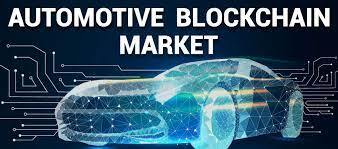Automotive
Automotive Industry Trends Shaping the Future

The automotive industry is undergoing significant changes that are reshaping its future. With advancements in technology, a growing emphasis on sustainability, and evolving consumer preferences, the landscape of vehicle manufacturing and ownership is transforming. This article explores key trends influencing the automotive sector, providing insights into how these developments are interlinked and what they mean for the future of driving.
Key Takeaways
- Electric vehicles are becoming more popular due to consumer demand and government support.
- AI is enhancing vehicle safety and maintenance, making cars smarter and safer.
- The rise of connected vehicles is changing how cars communicate and interact with their surroundings.
- Sustainability is a major focus, with manufacturers adopting eco-friendly practises and materials.
- New business models are emerging, such as subscription services and vehicle-as-a-service options.
Electrification of the Automotive Industry
The automotive industry is undergoing a significant transformation with the rise of electric vehicles (EVs). As more people seek environmentally friendly options, manufacturers are ramping up production to meet this demand. In 2024, nearly 600,000 EVs were sold in the United States alone, marking a 7.3% increase from the previous year. Globally, sales reached 7 million, a remarkable 20% rise compared to 2023.
Rise of Electric Vehicles
- Increased production of fully electric vehicles.
- Growing consumer interest in sustainable transport.
- Government mandates pushing for cleaner alternatives.
Battery Technology Advancements
The future of EVs heavily relies on advancements in battery technology. Key developments include:
- Shift to solid-state batteries.
- Reduction in battery costs below $80 per kWh.
- Improved battery life cycles.
Government Policies and Incentives
Governments worldwide are implementing policies to support the shift towards electrification. These include:
- Incentives for EV purchases.
- Expansion of charging infrastructure.
- Regulations promoting sustainable manufacturing practises.
The journey towards carbon neutrality in the automotive sector is not just a trend; it is a necessity for a sustainable future.
As the industry evolves, the electrification of vehicles will play a crucial role in shaping a cleaner, more efficient transportation landscape.
The Role of Artificial Intelligence in Modern Vehicles
AI in Autonomous Driving
The integration of artificial intelligence in vehicles is revolutionising how we drive. AI systems are essential for developing autonomous driving technologies. These systems use advanced sensors and algorithms to interpret data from the environment, allowing vehicles to navigate safely. The Society of Automotive Engineers (SAE) categorises automation into five levels:
- Level 0: No automation
- Level 1: Driver assistance
- Level 2: Partial automation
- Level 3: Conditional automation
- Level 4: High automation
Predictive Maintenance Using AI
AI also plays a crucial role in predictive maintenance. By analysing data from various vehicle sensors, AI can predict when a part might fail, allowing for timely repairs. This not only enhances vehicle safety but also reduces costs associated with unexpected breakdowns. Key benefits include:
- Reduced downtime for vehicles
- Lower repair costs through early detection
- Increased vehicle lifespan
AI for Enhanced Safety Features
Safety is a top priority in modern vehicles, and AI contributes significantly to this aspect. Features such as automatic emergency braking, lane-keeping assistance, and adaptive cruise control rely on AI to function effectively. These systems help prevent accidents and protect drivers and passengers.
The future of driving is not just about getting from point A to point B; it’s about doing so safely and efficiently, thanks to AI.
In summary, the role of AI in modern vehicles is multifaceted, enhancing everything from driving automation to safety and maintenance. As technology continues to evolve, we can expect even more innovative applications of AI in the automotive industry.
Impact of IoT on Vehicle Connectivity
Connected Car Technologies
Today, most cars are connected vehicles that can communicate with other devices and systems. This means they can send and receive data, making them smarter and more efficient. By 2024, it is expected that 72% of cars sold worldwide will be connected. This shift is largely due to advancements in technology, particularly the rise of 5G networks, which allow for faster and more reliable connections.
5G and Vehicle Communication
The introduction of 5G technology is a game changer for connected cars. It enables:
- Faster data transfer between vehicles and infrastructure.
- Real-time updates for vehicle software, similar to how smartphones work.
- Enhanced features that integrate cars into smart home systems.
Data Security and Privacy Concerns
As vehicles become more connected, data security becomes crucial. With the potential for nearly 300 million lines of code in a single vehicle, protecting this information is essential. Regulations like the UNECE W.29 and ISO/SAE 21434 are being put in place to ensure that manufacturers follow strict guidelines to keep data safe.
The future of vehicles is not just about transportation; it’s about creating a connected ecosystem that enhances safety and convenience for everyone.
| Feature | Current Status | Future Potential |
|---|---|---|
| Vehicle-to-Vehicle (V2V) | Limited | Widespread |
| Over-the-Air Updates | Common | Standard |
| Smart Home Integration | Emerging | Fully Integrated |
Sustainability and Environmental Concerns

The automotive industry is increasingly focusing on sustainable practises to reduce its environmental impact. This includes the use of eco-friendly materials and processes in vehicle production.
Eco-Friendly Manufacturing Processes
- Automakers are adopting lighter materials to improve fuel efficiency.
- Many companies are using recycled and upcycled materials in their vehicles.
- Innovations like bioplastics and plant-based materials are becoming more common.
Recycling and Reusing Automotive Materials
- The industry is working on better recycling methods for vehicle parts.
- Recycled plastics from fishing nets and bottles are being used in new cars.
- Efforts are being made to ensure that car parts are more recyclable.
Regulations and Compliance
- Governments worldwide are setting stricter environmental regulations.
- Policies are being introduced to encourage the use of sustainable materials.
- The automotive sector is collaborating with governments to meet these goals.
The shift towards sustainability in the automotive industry is not just a trend; it is a necessary step for the future of our planet.
In summary, the automotive industry is making significant strides towards sustainability, with a focus on eco-friendly materials, recycling, and compliance with regulations. As the market evolves, these practises will become increasingly important for manufacturers and consumers alike.
| Aspect | Current Trends | Future Projections |
|---|---|---|
| Use of Recycled Materials | Increasing use in vehicle production | Expected to double by 2030 |
| Government Regulations | Stricter standards being implemented | More global alignment on policies |
| Consumer Demand for Eco-Friendliness | Rising interest in sustainable vehicles | Anticipated growth in eco-friendly sales |
Advancements in Autonomous Vehicles
Levels of Driving Automation
The journey towards fully autonomous vehicles is marked by various levels of driving automation, ranging from Level 0 (no automation) to Level 5 (full automation). Here’s a brief overview of these levels:
| Level | Description |
|---|---|
| 0 | No Automation |
| 1 | Driver Assistance |
| 2 | Partial Automation |
| 3 | Conditional Automation |
| 4 | High Automation |
| 5 | Full Automation |
Challenges in Achieving Full Autonomy
Despite the advancements, several challenges remain in reaching full autonomy:
- Technical Limitations: Current technology struggles with complex driving environments.
- Regulatory Hurdles: Laws and regulations are still catching up with technology.
- Public Acceptance: Gaining trust from the public is crucial for widespread adoption.
Commercial Applications of Autonomous Vehicles
The potential for autonomous vehicles extends beyond personal use. Here are some commercial applications:
- Robo-taxis: Driverless taxis are being tested in various cities.
- Delivery Services: Companies are exploring autonomous delivery vehicles.
- Public Transport: Autonomous buses could revolutionise public transport systems.
The future of transportation is not just about self-driving cars; it’s about creating a safer, more efficient, and connected world.
In summary, while the advancements in autonomous vehicles are promising, the path to full autonomy is filled with challenges that need to be addressed. The industry is moving forward, but it requires collaboration and innovation to realise its full potential.
The Future of Car Shopping Experience
Online Car Sales Trends
The way people buy cars is changing fast. More buyers are turning to online platforms to research and purchase vehicles. In fact, a recent study showed that 80% of car buyers are open to making their purchase entirely online. This shift is driven by the convenience and accessibility of digital solutions, allowing consumers to compare prices and features from the comfort of their homes.
Virtual Reality Showrooms
Virtual reality (VR) is becoming a game-changer in the car shopping experience. With VR showrooms, customers can:
- Explore different car models in a 3D environment.
- Experience the interior and exterior features without visiting a dealership.
- Make informed decisions by visualising their choices in real-time.
Customer Behaviour and Preferences
As technology evolves, so do customer preferences. Here are some key trends:
- Increased demand for transparency in pricing and vehicle history.
- A preference for personalised experiences tailored to individual needs.
- Growing interest in sustainable options, such as electric vehicles.
The automotive industry is navigating the future of car buying, exploring how technology is transforming the auto retail industry as dealerships adapt to changing consumer preferences and leverage digital solutions for a better shopping experience.
Technological Innovations in Vehicle Design
3D Printing in Automotive Manufacturing
3D printing is changing how cars are made. This technology allows manufacturers to create parts quickly and efficiently. Here are some key benefits:
- Faster prototyping and design processes.
- Reduced weight of certain components.
- Ability to produce custom parts on demand.
For example, companies like Audi and Ford have reported significant time savings in production using 3D printing. This method not only speeds up the process but also promotes sustainability by using recycled materials.
Use of Advanced Materials
The automotive industry is increasingly using advanced materials to improve vehicle performance and sustainability. Some notable materials include:
- Plant-based leather for interiors.
- Recycled steel for structural components.
- Antimicrobial materials to enhance hygiene.
These materials help reduce the environmental impact of vehicle production while also meeting consumer demands for eco-friendly options.
Customisation and Personalisation
Modern consumers want cars that reflect their personal style. Customisation options are becoming more popular, allowing buyers to:
- Choose unique colours and finishes.
- Select interior materials that suit their preferences.
- Add technology features tailored to their needs.
This trend is reshaping the car-buying experience, making it more personal and engaging.
The future of vehicle design is about blending technology with personal expression, creating cars that are not just modes of transport but also reflections of individual identity.
Cybersecurity in Connected Vehicles
As cars become more connected, cybersecurity is crucial to protect against potential threats. By 2030, connected vehicles may contain nearly 300 million lines of code, making them vulnerable to cyber attacks. To address these risks, regulations like UNECE W.29 and ISO/SAE 21434 are being implemented. These guidelines help manufacturers manage cybersecurity risks and ensure safe software updates.
Threat Detection and Mitigation
- Regular software updates to fix vulnerabilities.
- Real-time monitoring of vehicle systems for unusual activity.
- Collaboration with cybersecurity experts to enhance vehicle security.
Regulatory Standards and Compliance
The European Commission has set new safety standards for vehicles, effective from July 2024. These include:
- Higher crash-test standards.
- Real-time GPS driving-speed assistance.
- Advanced sensors for pedestrian safety.
Future Challenges in Automotive Cybersecurity
- Increasing complexity of vehicle software systems.
- The need for constant updates to combat new threats.
- Balancing user privacy with security measures.
The automotive industry must adapt to the growing threat of cyber incidents, as research shows a steep increase in their impact in 2023, affecting thousands or even millions of vehicles.
In conclusion, as vehicles become more integrated with technology, ensuring their cybersecurity will be a top priority for manufacturers and regulators alike.
The Shift Towards Software-Defined Vehicles
Importance of Software in Modern Cars
Many of today’s vehicles are software-defined vehicles (SDVs), meaning that software controls various aspects of their performance and features. This includes everything from safety systems to entertainment options. The rise of SDVs is transforming cars into computers on wheels, allowing for continuous improvements through updates, much like smartphones.
Over-the-Air Updates
One of the key benefits of SDVs is the ability to receive over-the-air updates. This means that automakers can enhance vehicle functionality without requiring a visit to the dealership. Here are some advantages of this technology:
- Improved Performance: Regular updates can enhance the vehicle’s performance.
- New Features: Automakers can introduce new features post-purchase.
- Bug Fixes: Software issues can be resolved quickly without physical intervention.
Integration with Other Digital Ecosystems
As SDVs become more common, they are increasingly integrated with other digital systems. This integration allows for:
- Smart Home Connectivity: Vehicles can connect with smart home devices.
- Payment Services: Cars can facilitate payments for services like fuel or tolls.
- Enhanced User Experience: Personalised settings and preferences can be stored and accessed easily.
The software-defined vehicle market is projected to grow at a remarkable rate, achieving a 34% CAGR between 2023 and 2034, driven by ongoing advancements in onboard technology.
Future Challenges in Automotive Software
Despite the benefits, there are challenges to consider:
- Cybersecurity Risks: As vehicles become more connected, they are also more vulnerable to cyber threats.
- Regulatory Compliance: Automakers must adhere to new regulations regarding software safety and security.
- Consumer Trust: Building trust in software updates and data privacy is crucial for widespread adoption.
In conclusion, the shift towards software-defined vehicles is reshaping the automotive landscape, offering exciting opportunities and challenges for manufacturers and consumers alike.
Emerging Business Models in the Automotive Industry
The automotive industry is undergoing significant changes, leading to new business models that cater to modern consumer needs. As traditional ownership models evolve, several innovative approaches are emerging:
Vehicle-as-a-Service
- This model allows users to access vehicles without owning them, providing flexibility and convenience.
- It includes options like ride-sharing and car rentals, appealing to those who prefer not to commit to a single vehicle.
- Subscription services are gaining popularity, offering predictable costs and reliable vehicle availability.
Subscription-Based Ownership
- Many consumers, especially younger ones, are showing interest in subscription plans that offer a range of vehicles for a monthly fee.
- This model provides a hassle-free experience, including maintenance and insurance, making it attractive for those who value convenience.
- Surveys indicate that a significant percentage of young adults prefer this over traditional ownership.
Multi-Cycle Vehicle Sales
- Manufacturers are shifting from just selling new cars to offering multi-cycle sales, which include second and third-hand vehicles.
- This approach not only extends the lifecycle of vehicles but also integrates services like energy and connectivity.
- It reflects a growing trend towards sustainability and resource efficiency in the automotive sector.
The future of the automotive industry is here, bringing trends of electrification, autonomous vehicles, AI, IoT, machine learning, and sustainability.
| Business Model | Key Features | Target Audience |
|---|---|---|
| Vehicle-as-a-Service | Flexible access, no ownership | Urban dwellers, young adults |
| Subscription-Based Ownership | Predictable costs, convenience | Tech-savvy consumers |
| Multi-Cycle Vehicle Sales | Extended vehicle lifecycle, integrated services | Environmentally conscious buyers |
Global Collaboration and Partnerships
Joint Ventures and Alliances
In the automotive industry, collaboration is key to innovation and growth. Companies are increasingly forming joint ventures and alliances to share resources, technology, and expertise. This approach allows them to:
- Reduce costs
- Accelerate product development
- Enter new markets more effectively
Impact on Innovation and Development
The partnerships formed in the automotive sector have a significant impact on innovation. By pooling their strengths, companies can:
- Develop cutting-edge technologies faster.
- Enhance research and development capabilities.
- Create more sustainable practises.
Challenges and Opportunities
While collaboration offers many benefits, it also comes with challenges. Companies must navigate:
- Cultural differences
- Intellectual property concerns
- Regulatory hurdles
The automotive landscape is evolving rapidly, and global sales and collaboration are expected to grow significantly. By 2030, more than five OEMs are projected to surpass 10 million sales globally, highlighting the importance of partnerships in achieving these goals.
Consumer Trends and Market Demands
Rise of SUVs and Crossovers
The popularity of SUVs and crossovers continues to grow, with SUVs projected to exceed 65% of total passenger vehicle sales by 2030. This trend reflects a shift in consumer preferences towards larger, more versatile vehicles that offer both comfort and utility.
Impact of Economic Factors
Economic conditions play a significant role in shaping consumer behaviour. Factors such as fuel prices, interest rates, and overall economic stability influence purchasing decisions. For instance:
- Higher fuel prices can lead consumers to consider more fuel-efficient vehicles.
- Low interest rates may encourage buyers to finance new cars.
- Economic downturns often result in a preference for used vehicles over new ones.
Changing Consumer Preferences
Today’s consumers are more informed and have specific expectations when it comes to vehicle features. Key preferences include:
- Advanced safety features such as automatic braking and lane-keeping assist.
- Connectivity options like smartphone integration and in-car Wi-Fi.
- Sustainability with a growing interest in electric and hybrid vehicles.
The automotive market is evolving rapidly, and manufacturers must adapt to meet the changing demands of consumers. Understanding these trends is crucial for success in the industry.
| Trend | 2023 Sales Percentage | 2030 Projected Sales Percentage |
|---|---|---|
| SUVs and Crossovers | 57.4% | 65% |
| Electric Vehicles | 10% | 30% |
| Hybrid Vehicles | 15% | 25% |
Conclusion
In summary, the automotive industry is undergoing significant changes that will shape its future. Key trends like electric vehicles, advanced software, and self-driving technology are not just isolated developments; they are interconnected and influence one another. As concerns about the environment grow, manufacturers are adapting to meet new regulations and customer expectations. The rise of smart technology and connectivity is transforming cars into more than just vehicles; they are becoming integral parts of our daily lives. This exciting time in automotive innovation presents both challenges and opportunities. It is crucial for companies to embrace these trends to stay relevant and meet the needs of their customers and the planet.
Frequently Asked Questions
What is electrification in the automotive industry?
Electrification means using electric power for vehicles instead of traditional fuels like petrol or diesel. This trend is growing as more electric cars hit the market.
How is AI changing modern vehicles?
AI helps cars become smarter. It can assist with things like driving on their own, predicting when parts might need fixing, and improving safety features.
What role does the Internet of Things (IoT) play in cars?
IoT connects cars to the internet, allowing them to share data with other devices. This makes cars more efficient and helps with features like navigation and safety.
Why is sustainability important in the automotive industry?
Sustainability focuses on reducing harm to the environment. Car makers are finding ways to produce vehicles that are kinder to the planet and use eco-friendly materials.
What are autonomous vehicles?
Autonomous vehicles are cars that can drive themselves without human help. They use various technologies to navigate and make decisions.
How is the car shopping experience changing?
More people are buying cars online. Virtual showrooms and digital tools are making it easier for customers to find and purchase cars from home.
What are software-defined vehicles?
Software-defined vehicles use software to control many of their functions. This allows for updates and new features to be added without needing to change the hardware.
What are the challenges of cybersecurity in connected cars?
As cars become more connected, they also become targets for hackers. Ensuring data security and protecting against cyber threats is a major concern for manufacturers.
-

 Press Release5 days ago
Press Release5 days agoGlobal Compound Feeds and Additives Industry Report: Market Expansion and Competitive Insights to 2035
-

 Technology5 days ago
Technology5 days agoWhat to Know Before Switching Cell Phone Network Services in 2025
-

 Press Release4 days ago
Press Release4 days agoCrypto WINNAZ Launches First On-Chain Yield Engine for Meme Coins, Enabling 20x–300x Returns
-

 Press Release23 hours ago
Press Release23 hours agoBellarium ($BEL) Price Prediction: Could It Hit $5 by 2026?
-

 Press Release22 hours ago
Press Release22 hours agoWhy Alaxio (ALX) Is a Top Pick for Smart Crypto Investors
-

 Business2 hours ago
Business2 hours agoHow Managed IT Solutions Help Small Teams Compete at Enterprise Scale




















